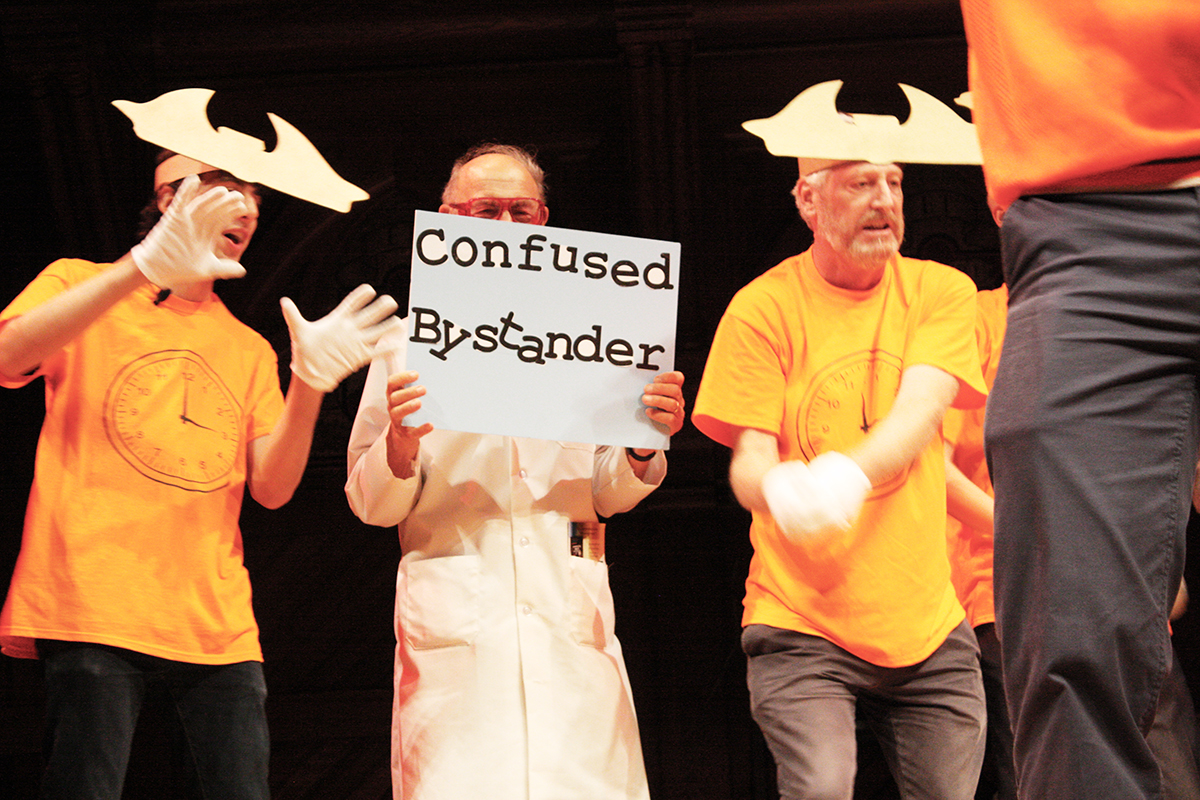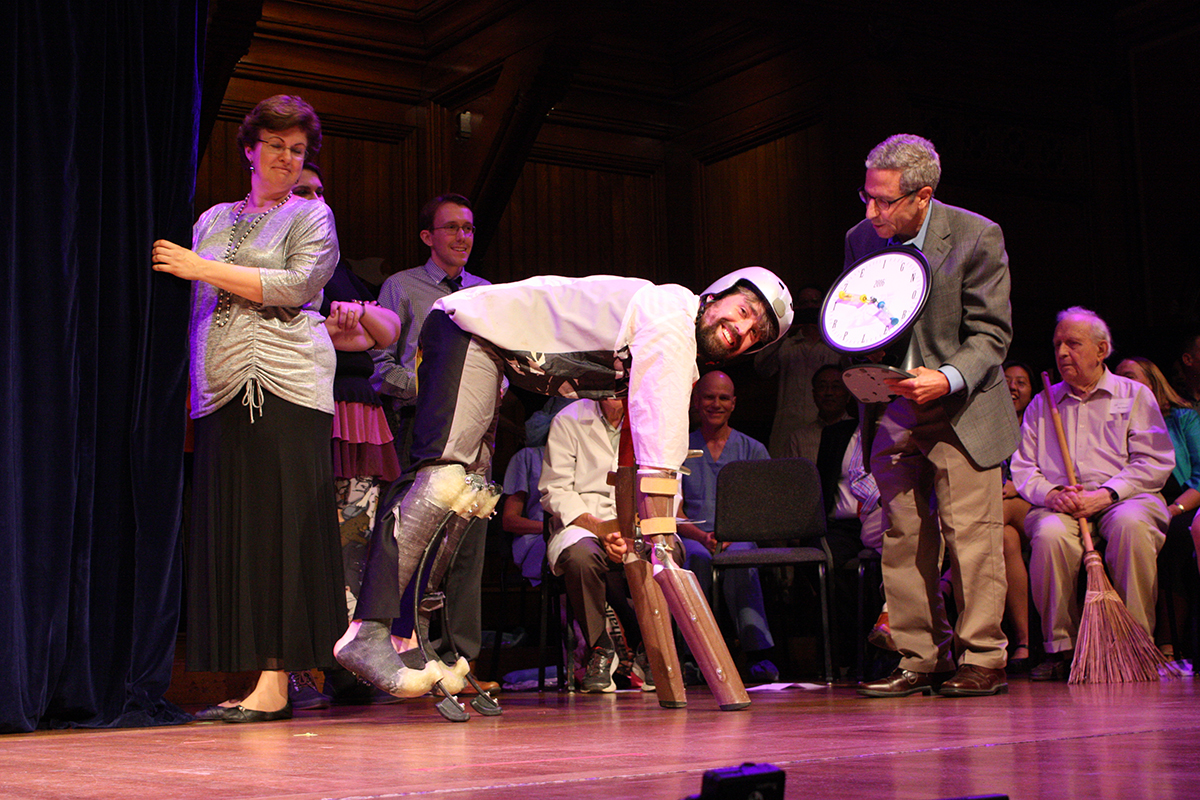Expect the Unexpected at the 2017 Ig Nobel Prize Ceremony

Today (Sept. 14), select winners of the esteemed Nobel Prize will gather on a stage at Harvard University for a time-honored awards presentation — but for a change, they won't be the ones who are celebrated. Rather, they'll be distributing prizes for unconventional research in an annual ceremony known as the Ig Nobels.
Some refer to the Ig Nobels as a parody of the acclaimed Nobel Prize awards, but that doesn't really do the ceremony justice. The Ig Nobels celebrate research that emerges from asking interesting questions — while they don't necessarily address the world's most pressing challenges, they do represent the curiosity that is an intrinsic part of experiments and discoveries.
You can watch a live webcast of the 27th First Annual Ig Nobel Prize ceremony on Live Science, with a preceremony concert that will kick off at 5:40 p.m. ET. The festivities will start at 6:00 p.m. ET. [In Photos: The 2016 Ig Nobel Prize Ceremony]
When asked about the inspiration for this year's theme — "Uncertainty" — Abrahams replied, unsurprisingly, "I'm not sure." But he was more forthcoming about how the Ig Nobel-winning studies are discovered and selected.
"We're always looking," Abrahams said; "we" being the Ig Nobel Board of Governors, which is made up of about 100 people who meet throughout the year.
"People send us things every day — people that did the research, scientists that know about the research, journalists who come across stories that don't quite fit their beat. And whatever we don't pick to win a prize one year, if it has the right feel, we'll put it back in the pool," Abrahams explained.

Research doesn’t have to be published within a given year to be considered for that year's prizes — in 2001, the Ig Nobels reached back to the 1940s to acknowledge the contributions of people who laid the groundwork for a popular concept known as "Murphy's law," stating that anything that can go wrong, will go wrong, Abrahams told Live Science.
Sign up for the Live Science daily newsletter now
Get the world’s most fascinating discoveries delivered straight to your inbox.
In the 27 years since the first prizes were handed out, the essential idea of the Ig Nobels has remained unchanged. But the ceremony was in its seventh or eighth year before the organizers stumbled across a way to accurately describe what the prizes were really all about, Abrahams recalled.
"I was talking to a reporter who misunderstood completely; he thought the Ig Nobels were about rewarding terrible things," Abrahams said. He responded with what has since become the signature description of the Ig Nobels — that they recognize achievements "that first make people laugh, and then make them think."
For Abrahams — and for the Ig Nobels — that was a turning point in defining what the awards represented.
"I heard that the reporter immediately understood — and it works every time," Abrahams said. "That was almost 20 years ago, but it made a dramatic difference."

Last year's winners certainly met that criteria. The 2016 Ig Nobel for economics went to researchers who questioned whether rocks had personalities "from a sales and marketing perspective," while the Ig Nobel for medicine went to five scientists who revealed that a person could relieve an itch on their left arm by looking in a mirror and scratching their right arm.
A winner of the Ig Nobel for biology, Thomas Thwaites, designed novel prosthetics so that he could modify his limbs to walk on four legs like a goat; he then roamed the Alps in the company of goats, a process he documented in the book "GoatMan: How I took a Holiday from Being Human" (Princeton Architectural Press, 2016). Thwaites wore his goat prosthetics onstage at the Ig Nobels to collect his prize, which proved to be somewhat challenging — since his arms were inserted into the prosthetics, he had to accept the award using his mouth.
And what can Ig Nobel attendees and viewers expect to see this year?
"The unexpected, of course! That's the whole point," Abrahams told Live Science. "You'll be surprised in ways that will delight you immediately, or down the road."
Original article on Live Science.

Mindy Weisberger is an editor at Scholastic and a former Live Science channel editor and senior writer. She has reported on general science, covering climate change, paleontology, biology and space. Mindy studied film at Columbia University; prior to Live Science she produced, wrote and directed media for the American Museum of Natural History in New York City. Her videos about dinosaurs, astrophysics, biodiversity and evolution appear in museums and science centers worldwide, earning awards such as the CINE Golden Eagle and the Communicator Award of Excellence. Her writing has also appeared in Scientific American, The Washington Post and How It Works Magazine. Her book "Rise of the Zombie Bugs: The Surprising Science of Parasitic Mind Control" will be published in spring 2025 by Johns Hopkins University Press.










